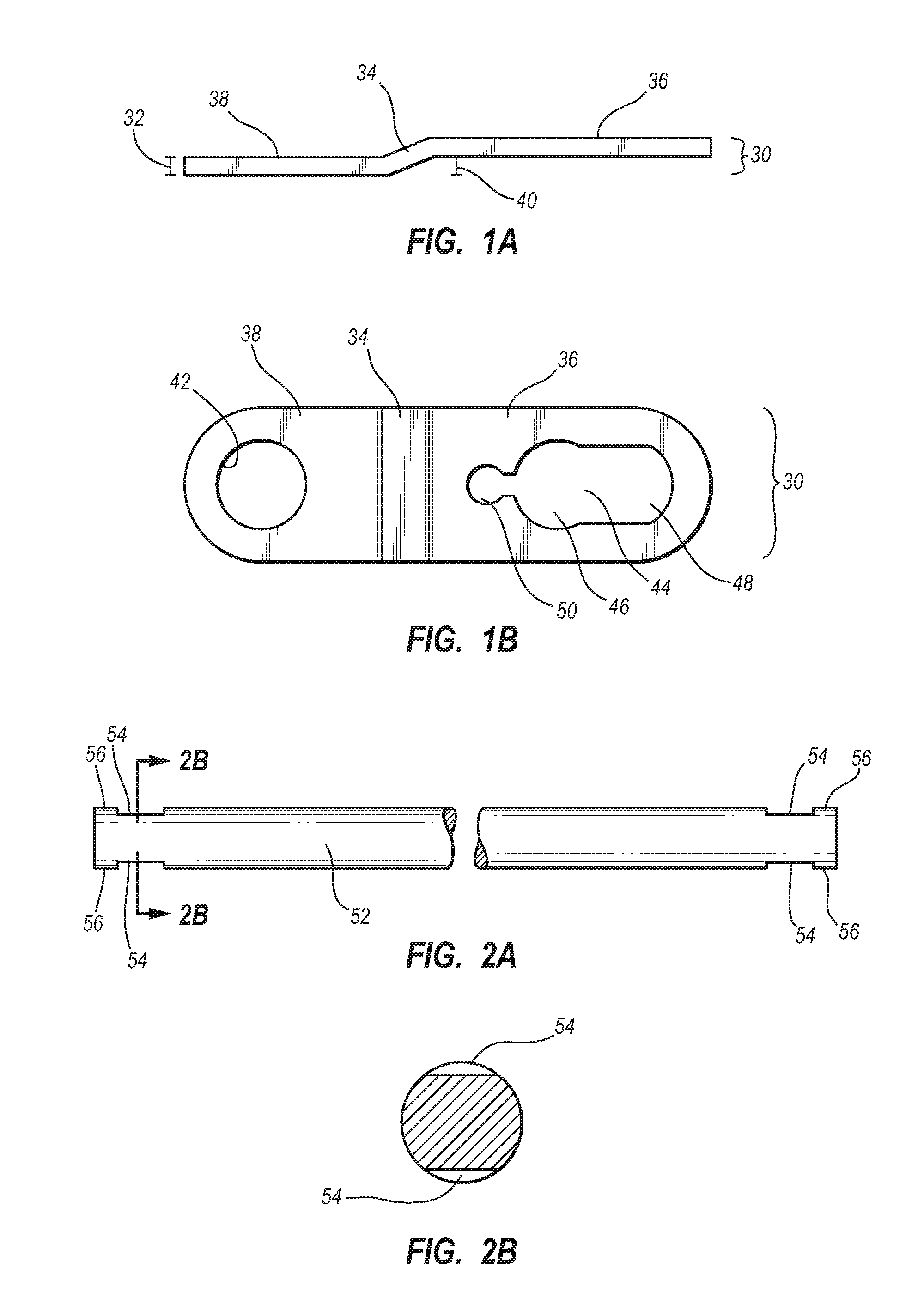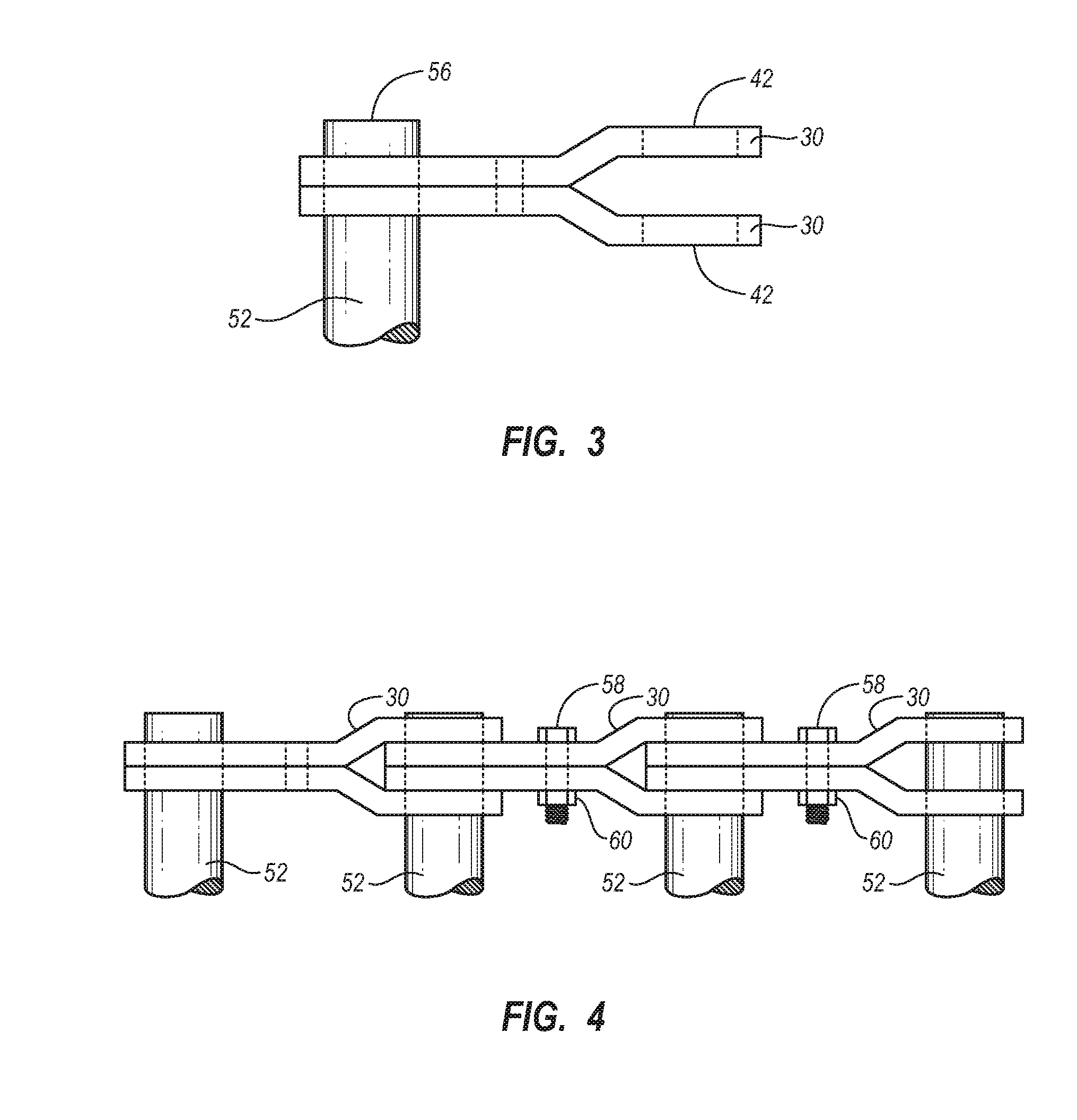Double Side-Bar Conveyor or Digger Chain
a conveyor chain and side bar technology, applied in the field of conveyor chains, can solve the problems of drive shafts, link damage, tedious and time-consuming assembly of such constraining devices, etc., and achieve the effect of easy repair, easy removal and replacement, and easy removal and replacemen
- Summary
- Abstract
- Description
- Claims
- Application Information
AI Technical Summary
Benefits of technology
Problems solved by technology
Method used
Image
Examples
Embodiment Construction
[0025]Referring now to the Figures, a description of the embodiments of the present invention will be given. It is expected that the present invention may take many other forms and shapes, hence the following disclosure is intended to be illustrative and not limiting, and the scope of the invention should be determined by reference to the appended claims.
[0026]In the specification and in the claims, the terms “chain,”“conveyor chain,” and “digger chain” shall be synonymous and interchangeable. The terms “rod” and “flight rod” shall be synonymous and interchangeable, and may refer to rods of any length and diameter, and also may include rods of varying materials and strengths.
[0027]FIGS. 1a and 1b show side and top views of a side bar 30 in accordance with one embodiment of the present invention. The side bar 30 is manufactured from a durable material sufficiently strong to hold up to the rigors of use as the linking member of a conveyor chain. Typically, the side bar 30 is made of m...
PUM
 Login to View More
Login to View More Abstract
Description
Claims
Application Information
 Login to View More
Login to View More - R&D
- Intellectual Property
- Life Sciences
- Materials
- Tech Scout
- Unparalleled Data Quality
- Higher Quality Content
- 60% Fewer Hallucinations
Browse by: Latest US Patents, China's latest patents, Technical Efficacy Thesaurus, Application Domain, Technology Topic, Popular Technical Reports.
© 2025 PatSnap. All rights reserved.Legal|Privacy policy|Modern Slavery Act Transparency Statement|Sitemap|About US| Contact US: help@patsnap.com



